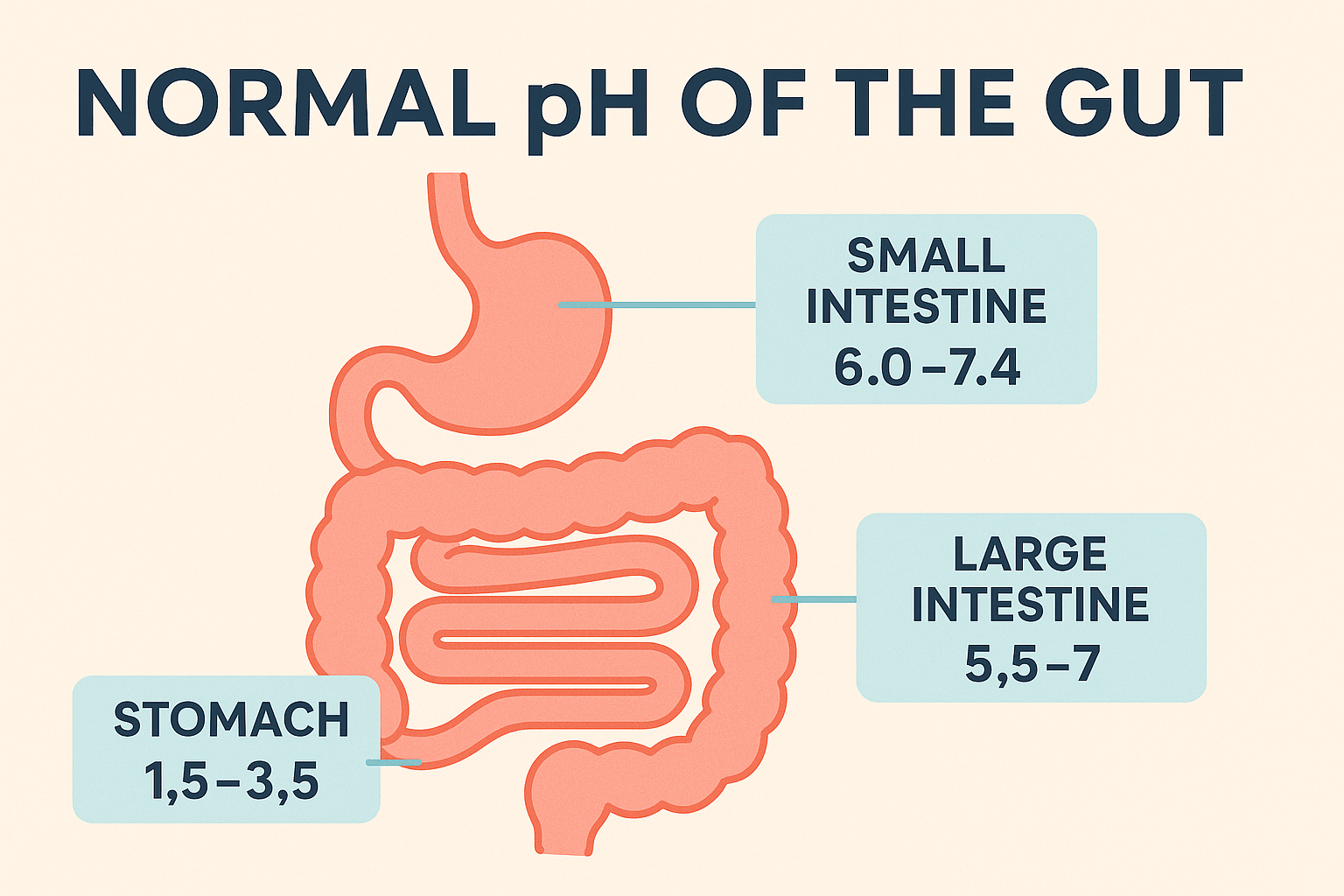
What is the Normal pH of the Gut? A Complete Guide
Discover the normal pH of the gut and how it varies across the digestive tract. Learn about the pH of... Read more
Discover how the pH of the large intestine shapes digestion and gut health. The large intestine handles fiber fermentation, water absorption, and immune interactions, and the pH within this zone influences which microbes thrive and how fermentation proceeds. So, what ph is the large intestine? In healthy adults, the colon tends to run in a mildly acidic to neutral range, generally around pH 6 to 7, though it can vary along its length and with meals. This narrow window matters because microbial enzymes, fermentation patterns, and mucosal health all respond to pH, guiding how nutrients are extracted and how waste is formed. Key pH ranges and why they matter: Within the large intestine, most fermentation-driven activity occurs in a pH window roughly between 5.5 and 7.0. A slightly more acidic environment (toward 5.5–6.0) supports certain beneficial bacteria that produce short-chain fatty acids, such as butyrate, which nourishes colon cells and helps regulate inflammation. If the pH shifts toward the higher end or dips below 5.5, the balance of microbes can change, potentially affecting stool consistency, gas production, and overall comfort. When you ask again, what ph is the large intestine, remember that it’s a dynamic balance shaped by what you eat, how hydrated you are, and how quickly transit occurs. What factors shift it: Diet is a primary driver. High-fiber, plant-rich patterns tend to promote a slightly more acidic, SCFA-rich environment that can lower pH and support healthy microbial functions, while diets heavy in fat and processed foods with less fiber can tilt pH upward or alter fermentation pathways. Transit time, hydration, and stool frequency also influence pH, as do antibiotics, infections, and inflammatory conditions. Age and lifestyle factors further modulate the baseline, making pH a moving target that reflects overall gut ecology. How InnerBuddies fits in: InnerBuddies offers a white-label Gut Health Operating System that lets companies build comprehensive gut microbiome testing products and experiences around pH-related insights. Key features include a Gut Microbiome Health Index (0–100) based on an exclusive IP deal with EAFIT University in Colombia; Bacteria Abundances that compare you to a healthy cohort; Bacteria Functions categorized and scored for positive versus negative roles; Target Group Analysis for topics like Healthy Aging, Endurance Sport, Skin & Hair Health, and more; Personalized nutrition advice using 3-day food diaries aligned with stool data; and personalized probiotic and prebiotic recommendations. This platform lets you illuminate how pH shifts relate to function and health for your audience. InnerBuddies also delivers consumer-facing gut test solutions with the same capabilities. Learn more on their product page: InnerBuddies microbiome test, or explore ongoing insights with a subscription: InnerBuddies Gut Health Membership. If you’re a business seeking to partner, see the B2B program: InnerBuddies B2B Partner Program.

Discover the normal pH of the gut and how it varies across the digestive tract. Learn about the pH of... Read more